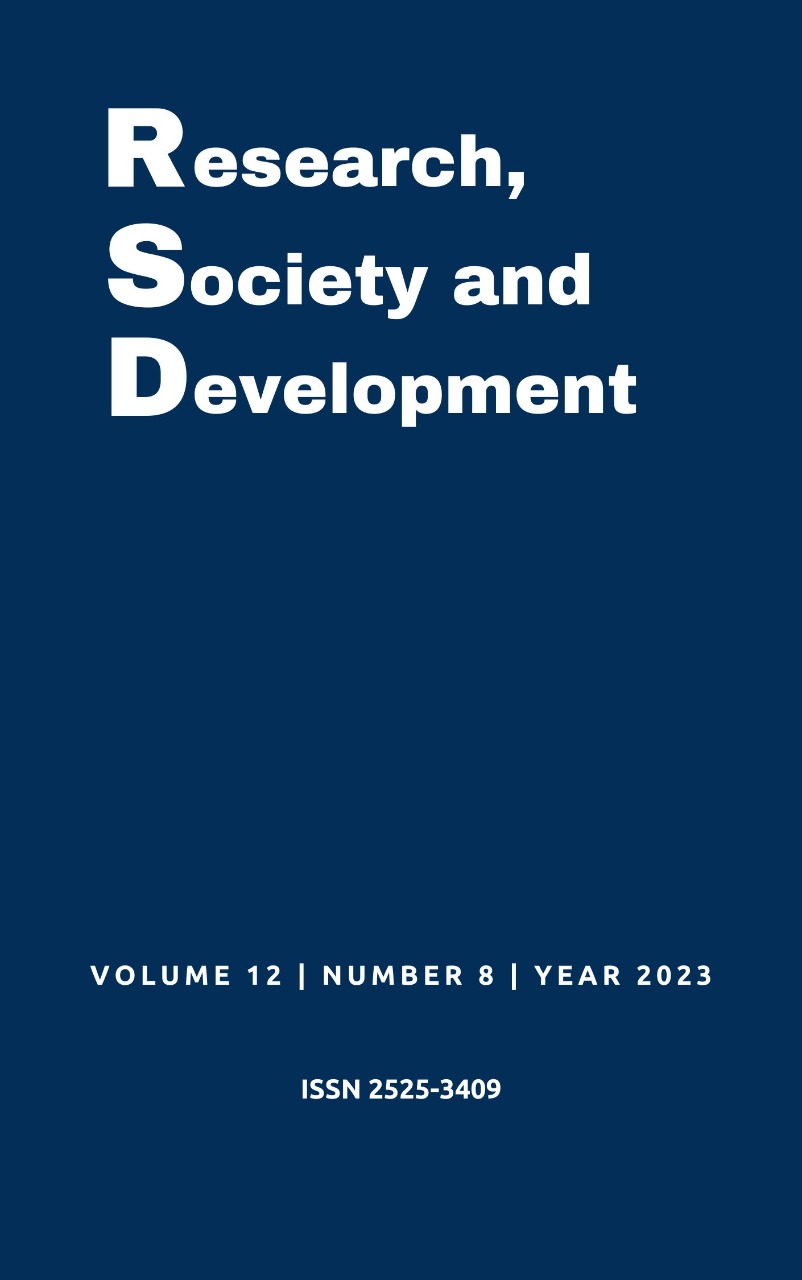Palliative care: general aspects, pain control and the role of the anesthesiologist
DOI:
https://doi.org/10.33448/rsd-v12i8.42825Keywords:
Palliative care, Anesthesia, Pain.Abstract
Palliative Care emerges as a humanitarian philosophy of caring for patients terminally ill, alleviating their pain and suffering. These precautions foresee the action of an interdisciplinary team, where each professional, recognizing the limits of his action will contribute to the patient, in a terminal state, having dignity in his death. Specifically in the field of anesthesia, the expansion of palliative care is even more recent, verifying that the challenges for the anesthetist who assists the patient what requires care palliatives he comes increasing due to the growing progress obtained with the new techniques of analgesia and sedation. Caring in anesthesia palliative care is intended to provide comfort, provide the other with their own care and give you O power in if blame per that. Among these news techniques stands out the controlled analgesia for the patient (ACP).
References
Alves, R. S. F. et al. (2019). Cuidados Paliativos: Alternativa para o Cuidado Essencial no Fim da Vida. Psicol. Cienc. Prof., 39 (1).
Ameno, A. J. S., et al. (2020). Estudo da oferta de medicamentos antieméticos para abordagem de náuseas e vômitos induzidos por antineoplásicos no Brasil. Brazilian Journal of Health and Pharmacy, 2 (2), 1-8.
Andrade, C. G., et al. (2017). Cuidados paliativos e comunicação: estudo com profissionais de saúde do serviço de atenção domiciliar. Rev. Fund. Care. Online, 9 (1), 215-221.
Balboni, T. A. et al. (2017). State of the Science of Spirituality and Palliative Care Research Part II: screening, assessment, and interventions. Journal of Pain and Symptom Management, 54 (3), 78-91.
Basol, N. (2016). The Integration of Palliative Care into the Emergency Department. Turk J Emerg Med, 15 (2), 100-107.
Brasil. (2020). Manual de Cuidados Paliativos / Coord. Maria Perez Soares D’Alessandro, Carina Tischler Pires, Daniel Neves Forte ... [et al.]. Hospital Sírio Libanês; Ministério da Saúde; 2020.
Brasil. (2010). Ministério da Saúde. Secretaria de Atenção à Saúde. Política Nacional de Humanização. Formação e intervenção / Ministério da Saúde, Secretaria de Atenção à Saúde, Política Nacional de Humanização. – Brasília: Ministério da Saúde, 2010. 242 p. – (Série B. Textos Básicos de Saúde) (Cadernos HumanizaSUS; v. 1).
Brugugnolli, I. D., Gonsaga, R. A., Silva, E. M. (2013). Ética e cuidados paliativos: o que os médicos sabem sobre o assunto? Rev. Bioética, 21 (3), 477-485.
Duarte, E, C. P. S., et al. (2020). Assistência nutricional para os cuidados paliativos de pacientes oncológicos: uma revisão integrativa. Revista de Atenção à Saúde, 18 (64), 124-132.
Esperandio, M.; Leget, C. (2020). Espiritualidade nos cuidados paliativos: questão de saúde pública? Rev. Bioética, 28 (3), 543-553.
Evangelista, C. B., et al. (2016). Cuidados paliativos e espiritualidade: revisão integrativa da literatura. Revista Brasileira de Enfermagem., 69 (3).
Felix, Z. C., et al. (2013). Eutanásia, distanásia e ortotanásia: revisão integrativa da literatura. Ciênc. Saúde Colet., 18 (9), 2733-2746.
García, D. M. J., et al. (2019). Revisión sistemática para el abordaje de síntomas desagradables gastrointestinales en cuidados paliativos. Revista Cuidarte, 19 (8).
Kovács, M. J. (2014). A caminho da morte com dignidade no século XXI. Revista Bioética, 22 (1), 94-104.
Lau, T. K. H. (2016). State of the Art Antiemetic Therapy for Cancer Patients. Curr Oncol Rep., 18 (2), 1-13.
Matsumoto, D Y. (2009). Cuidados Paliativos: conceito, fundamentos e princípios. In: Academia Nacional de Cuidados Paliativos (coord.). Manual de Cuidados Paliativos. Diagraphic, 2009. cap. 1, 14-19.
Monteiro, D. T., et al. (2014). Medidas de conforto ou distanásia: o lidar com a morte e o morrer dos pacientes. Rev. SBPH, 22 (2).
Pinto, T. C. (2015). Sintomas Respiratórios. In: Martins, M. de A. Manual do Residente da Clínica Médica. Manole Ltda, cap. 188, 811- 816.
Rocha, J. A. (2018). Dispneia. In: Carvalho, Ricardo T. et al. Manual da Residência de Cuidados Paliativos: Abordagem Multidisciplinar. Manole Ltda, 2018. cap. 6, 192-201.
Severino, R. (2020). Gestão da dispneia em cuidados paliativos: intervenções farmacológicas e não farmacológicas. Revista Investigação em Enfermagem, 31 (2), 9-23.
Silva, R. S., et al. (2017). Construction and validation of nursing diagnoses for people in palliative care. Rev. Latino-Am. Enfermagem, 5 (8).
Silva, Y. B., et al. (2006). Controle da Dispnéia. In: PIMENTA, Cibele Andrucioli de Mattos; MOTA, Dálete Delalibera Corrêa de Faria; DA CRUZ, Diná de Almeida Lopes Monteiro. Dor e Cuidados Paliativos: Enfermagem, Medicina e Psicologia. Manole Ltda, 2006. cap. 11, 207-216.
Souza, H. L., et al. (2015). Cuidados paliativos na atenção primária à saúde: considerações éticas. Revista Bioética, 23(2), 249-359.
World Health Organization. Definition of palliative care (WHO) (2016). Geneva: OMS, 2016. http://www.who.int/cancer/ palliative/definition/en/.
Downloads
Published
Issue
Section
License
Copyright (c) 2023 Letícia Morais Rezende; Anderson Henrique do Couto Filho; Pedro Henrique Teixeira Pimenta; Isabella Camin Pena; Nathália Paula Franco Santos; Djulie Helen Moraes de Andrade; Thiago Augusto Melo Gontijo; Alyssa de Pinho Freire; Jheniffer Fernandes Silva; Amanda Bolela

This work is licensed under a Creative Commons Attribution 4.0 International License.
Authors who publish with this journal agree to the following terms:
1) Authors retain copyright and grant the journal right of first publication with the work simultaneously licensed under a Creative Commons Attribution License that allows others to share the work with an acknowledgement of the work's authorship and initial publication in this journal.
2) Authors are able to enter into separate, additional contractual arrangements for the non-exclusive distribution of the journal's published version of the work (e.g., post it to an institutional repository or publish it in a book), with an acknowledgement of its initial publication in this journal.
3) Authors are permitted and encouraged to post their work online (e.g., in institutional repositories or on their website) prior to and during the submission process, as it can lead to productive exchanges, as well as earlier and greater citation of published work.


